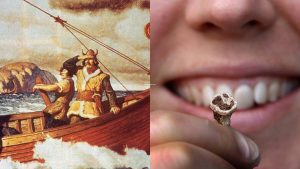The History Of Comic Books, Simplified
With the mainstream popularity of comic-inspired movies like Avengers: Endgame, most people can at least recognize the most popular comic book characters. But the comics we know today have only existed for less than a century. The Marvel and DC universes would not be the same without both World Wars, 1950s ethical debates, and international comic book artists.
This history of comic books is a complex and fascinating story. Here, you can learn about how comics started and were elevated from newspapers to the big screen. Seeing how far comics have come will present a newfound appreciation for the genre. Let’s dive into this fascinating history.
Pre-Twentieth Century Comics

Comics existed before the twentieth century, but they did not appear like they do today. Instead of having full volumes, magazines, and websites dedicated to them, comics garnished the side strips of newspapers. One of the earliest comics came out in New York World, Joseph Pulitzer’s magazine (who later inspired the Pulitzer Prize).
Illustrator Richard Outcault created a boy in a yellow nightshirt known as “The Yellow Kid,” who skyrocketed in popularity. Although the Yellow Kid only lasted until 1898, it influenced Belgian comic artists.
Comic Strips Get Animated

In the early 1900s, newspaper comic strips started to increase in quality. In 1905, Winsor McCay began running Little Nemo in Slumberland in the New York Herald. Not only did his work become the first comic with a continuing story, but it’s also widely credited as one of the most elaborately illustrated strips of all time.
In 1907, Mutt and Jeff by Bud Fisher became the first widely successful comic. The story would eventually become a printed book in 1919, and beginning in 1916, the Barré Studio animated Fisher’s stories for 11 years.
American Comics Sail Overseas

While comics appeared in newspapers throughout America, Japan hosted its own series of picture stories, kamishibai. Some historians assert that scrolls dating back to the Edo period were the first conception of comics. Either way, as American newspaper comics appeared throughout the states, they also popped up in Japan.
In 1902, Rakuten Kitazawa began the first Japanese comic strip. Newspapers such as Jiji Shinpō and Jiji Manga published comics as well, and were the first known usage of the word for Japanese comic books, manga.
Newspaper Comics Enter Mainstream Pop Culture

Although hundreds of comics appeared in newspapers throughout the 1920s, only a few survived long-term. Still, these cartoons laid down the foundation for the upcoming golden age. Gasoline Alley, by Frank King, still runs today. Winnie Winkle also continued in print until 1996.
In 1924, cartoonist Harold Grey began Little Orphan Annie in the Daily News. Not only did the strip gain recognition on radio shows, but it also developed into two film adaptations by RKO in 1932 and Paramount in 1938. Forty years later, the Broadway musical adaptation Annie released, which inspired three more movies through the 1980s and 2010s.
From Side Panels To Books

The 1930s is considered the Golden Age of Comics. The first reason is that comics from the ’20s sold as bound books. In 1933, Famous Funnies: A Carnival of Comics, based on the 1929 strips The Funnies by George T. Delacorte, became the first comic book as we know them today.
The full-color, 68-page book was either given away or sold at Woolworth’s department store. Some sources state that each copy cost 10 cents each, which was considered expensive at the time. Even so, Famous Funnies sold over 180,000 copies.
The Rise Of DC

The first superhero comics rapidly approached conception in the mid-1930s. In 1935, Major Malcolm Wheeler-Nicholson published works through his company, National Allied Publications, which would later become DC. His first two series consisted of New Fun Comics #1 and Adventure Comics, which the ran until 1983.
Wheeler-Nicholson advertised his third and final title, Detective Comics, in December 1936. Detective Comics #1 began coming out as a “hard-boiled detective” genre and didn’t feature superheroes until two years later. In future years, the series would be marred for racism and xenophobia.
World War II Hits Hard

World War II sculpted the 1940s and the rest of history. During this painful era, comic books remained popular, consisting of 30% of the reading material sent to deployed soldiers. However, most available paper immediately went to weapon and transport supplies. As a result, older comics such as Action Comics #1 shrank down to less than 100 remaining copies.
Two notable characters came out in 1941 in response to the war. Most notably, Timely Comics illustrated the Nazi-fighting super-soldier Captain America. In the same year, National Allied Publications released the female hero Wonder Woman.
American Soldiers Make Comics International

As American soldiers occupied territories overseas, they brought their favorite comics with them, which eventually influenced international graphic novelists. Before the Nazi regime, German readers transformed the American comic style into their own creations such as Erich Ohser’s Father and Son. Italian cartoonists made their own superhero comics in the 1930s.
Following World War II, American soldiers brought Disney comics to their occupation in Japan, which shaped the manga style that most people know today. Osamu Tezuka, the author of Astro Boy and the so-called God of Manga, invented the distinctive large eyes that became a trademark of the genre.
Superheroes Fall Out Of Style

The 1950s did not bode well for the companies that would later be named Marvel and DC. Comic sales rapidly declined, with most superheroes dying off before 1955. While the superhero stories faltered, other genres such as romance, crime, horror, Western, and science fiction all rose in popularity.
The decade began with the most profitable comic strip of all time, Charles M. Schulz’s Peanuts. The series would eventually evolve into TV specials and a Broadway musical. EC Comic’s Mad and Chic Young’s Blondie made the shelves, along with Disney’s first comic series, Uncle Scrooge.
The Superheroes Are Back

The 1960s proved to be a golden decade Timely Publications, now renamed Marvel Comics. In 1961, famous author Stan Lee came on board and kickstarted a new superhero group, The Fantastic Four. A year later, both Spider-Man and The Hulk debuted.
At the same time, Archie Comics began issuing the series Sabrina, the Teenage Witch that would spawn several TV shows. National Periodical Publications, not yet renamed to DC, bought out several other publications and debuted Teen Titans in 1964 and started the Batman and Robin TV show.
Comic Awards And The First Convention

Between 1961 and 1962, Jerry Bails formed the Academy of Comic-Book Fans and Collectors (ACBFC). This group would administer the first industry awards, the Alley Awards, annually by 1964. That same year, teenagers Bernie Bubnis and Ron Fradkin organized the first official convention, called “New York Comicon.”
In 1965, the ACBFC jumped on the bandwagon and produced the first recurring convention, Academy Con. Early events did not feature artists or celebrities, and guest lists only recorded a couple hundred people. By the 1970s, conventions grew to feature publishers, artists, and actors as special guests.
Comic Strips Achieve “Firsts”

Through the 1970s, comic strips continued to break records. In 1970, Garry Trudeau’s satirical slice-of-life comic Doonesbury debuted in daily newspapers. Doonesbury later became the first comic to win a Pulitzer Prize for Editorial Cartooning in 1975. Three years later, Garfield entered the scene where it would soon become the most merchandised comics of all time.
Meanwhile, Marvel had snatched DC’s number one spot. The “DC Implosion” resulted in consistently unsuccessful titles and a revamp by 1977, including officially renaming National Periodical Publications to DC Comics.
Changing Comic Sales And The Rise Of Specialty Stores

Throughout the early twentieth century, newsstands and drug stores distributed comic books on a sale-or-return model, in where retailers could return unsold or damaged comics for credit. Comic distributor Phil Seuling transformed this process in the 1970s.
Retailers now purchased comics directly from the publisher and gambled on how much they would need in Seuling’s new direct market system. As a result, comic book stores sprouted, and general book stores featured comic books on their shelves.
Comic Books Travel The World

From the ’50s through the ’70s, comic book readers were already translating and enjoying international works. Series like the Japanese comics Harlock were translated into over 80 languages. Franco-Belgian author Moebius wrote over 60 comics such as The World of Edena that reached the US and inspired future creators such as George Lucas.
In the ’70s and ’80s, comic artists such as Art Spiegelman put out magazines that featured translated international works, such as Heavy Metal and Raw. Manga didn’t receive an American magazine until 2003 with the translated edition of Shonen Jump.
New Publishers Support Upcoming Creators

With comics getting more sales and merchandise deals, new publishers popped up in the early 1980s that offered new illustrators and writers a fresh start. In 1981, Chris Claremont wrote several well-selling X-Men comics. Alan Moore wrote Watchmen and Miracleman throughout the decade. Bill Watterson started publishing Calvin and Hobbes in the newspapers in 1985. Neil Gaiman began DC’s The Sandman in 1989.
In 1986, Art Spiegelman wrote a comic based on his father’s Holocaust experiences called Maus. His graphic novels gained respectability among mainstream readers and critics and eventually won a Pulitzer Prize.
Smaller Industries Compete With Marvel And DC

By the 1990s, the industries that sprouted in the ’80s grew popular enough to compete with the top two publishers, Marvel and DC. For instance, the Portland company Dark Horse ascended as a competitor with Frank Miller’s series Sin City and Joss Wehdon’s Buffy the Vampire Slayer.
In 1992, comic creators, Jim Lee, Erik Larsen, Rob Leifeld, and Todd McFarlane left Marvel to create Image Comics, which is now the third largest comic book seller in the world. DC branched off into smaller imprint companies to add to the market, such as the adult content seller Vertigo Comics.
Digital Comics Soak Into The Mainstream

With the widespread use of the internet, comic books often sold online for collectors and readers across the globe. But digital comic books didn’t touch most comic book readers until the early twenty-first century. In 2007, Marvel launched their subscription Marvel Digital Comics Unlimited, which allowed readers to view their stores online.
By the time smartphones and tablets became the norm, comic book publishers entered apps and websites such as comiXology to display their work. In 2010, physical comic book sales dropped by 20%, while online graphic novel sales jumped an impressive 1,000% increase.




